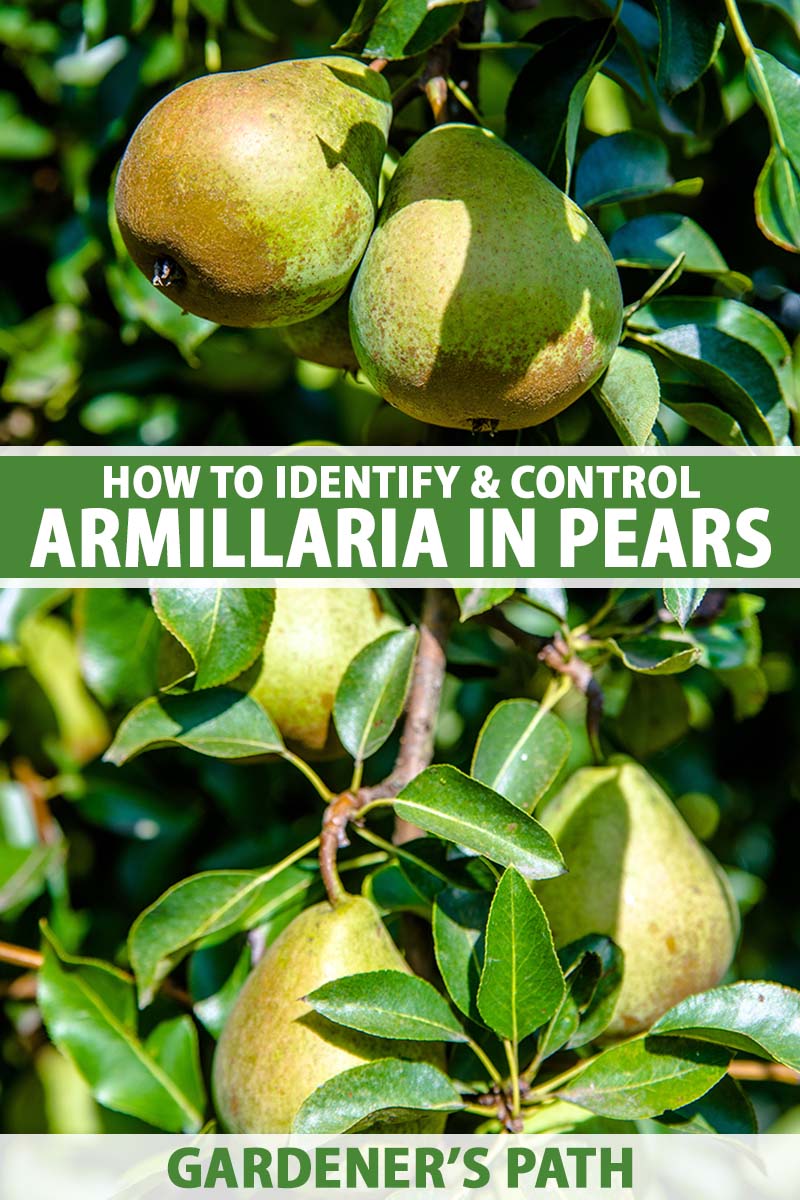Armillaria mellea
There’s a plant illness on the market generally known as honey fungus or honey mushroom, and it sounds form of cute to me. What may very well be dangerous a couple of honey mushroom?
Loads.
Generally known as oak root fungus – although it infects way more species than simply oaks – Armillaria root and crown rot, because it’s recognized to botanists, is a terror.
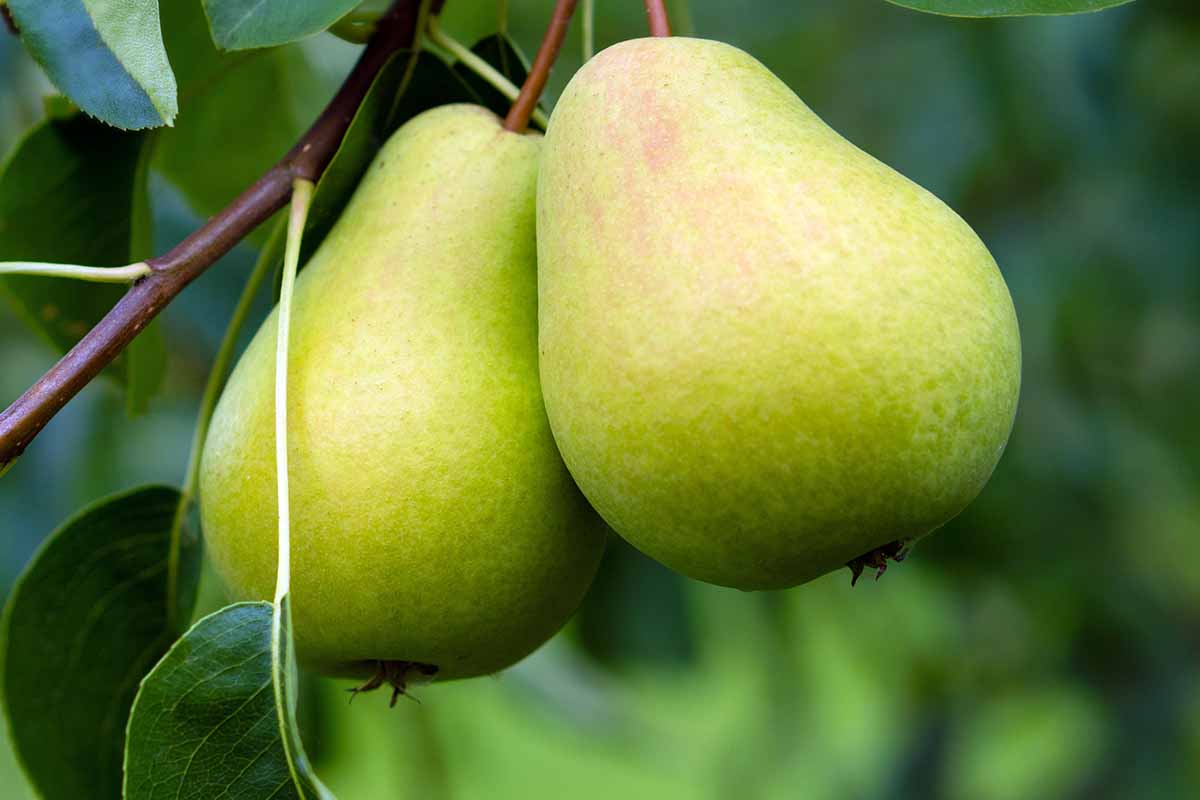

We hyperlink to distributors that can assist you discover related merchandise. Should you purchase from considered one of our hyperlinks, we could earn a fee.
It’s an absolute menace that impacts apples, apricots, walnuts, and different necessary crops. Within the southeast, it destroys fruit crops like Godzilla storming by means of a metropolis.
Pears aren’t fairly as vulnerable as another fruit bushes, however they aren’t immune. When Armillaria comes calling, your pears are in deep trouble.
You actually don’t need to must take care of this illness. So on this information we’ll cowl the place it comes from, tips on how to keep away from it, and what to do if it infects your pears.
Right here’s what we’ll focus on:
What Is Armillaria?
Armillaria rot is attributable to the fungus Armillaria mellea. The fungus thrives when the climate is cool and moist.
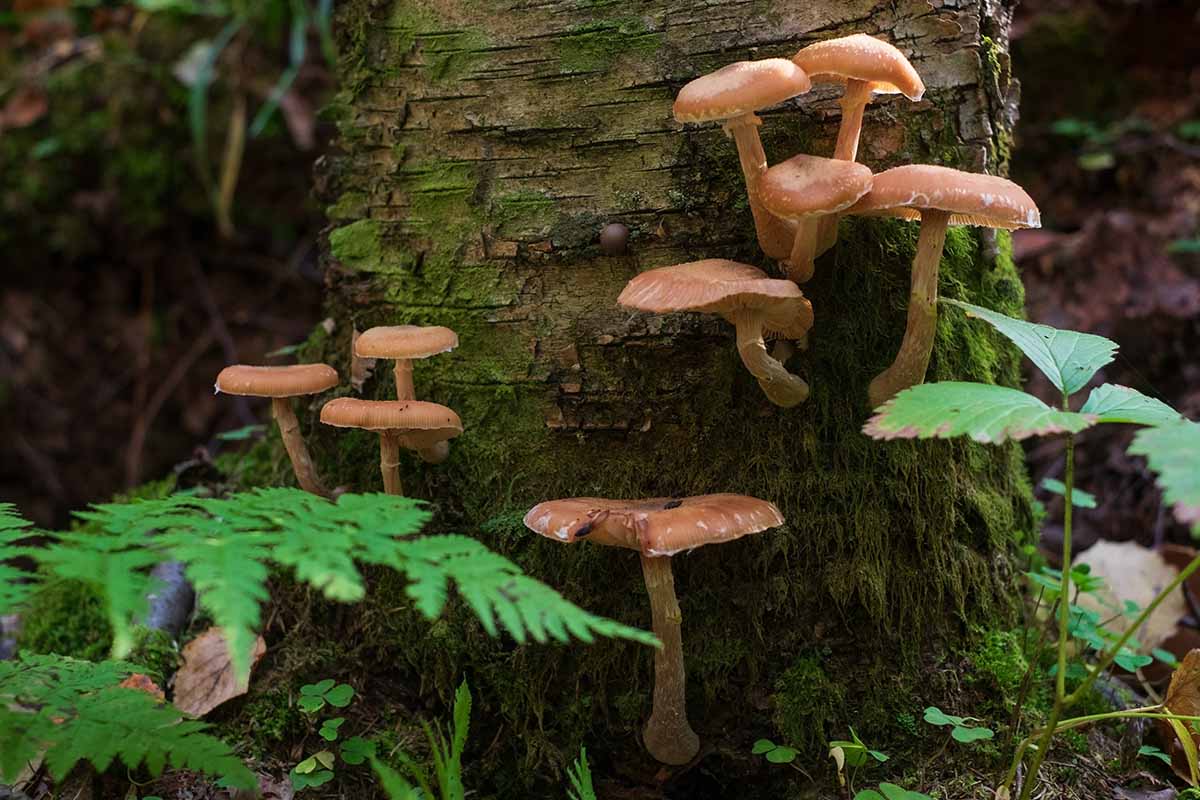

In contrast to some fungal illnesses, that are largely invisible, this one reveals up as precise mushrooms – fruiting our bodies – on the contaminated plant, in addition to massive mats of spores hiding below the bark.
For many years, pear growers assumed that their crops have been immune from the illness, as prior to now, pears had been considerably immune to the fungus.
However within the Nineties, the illness began spreading quickly in California pear orchards. Lately, nobody is immune.
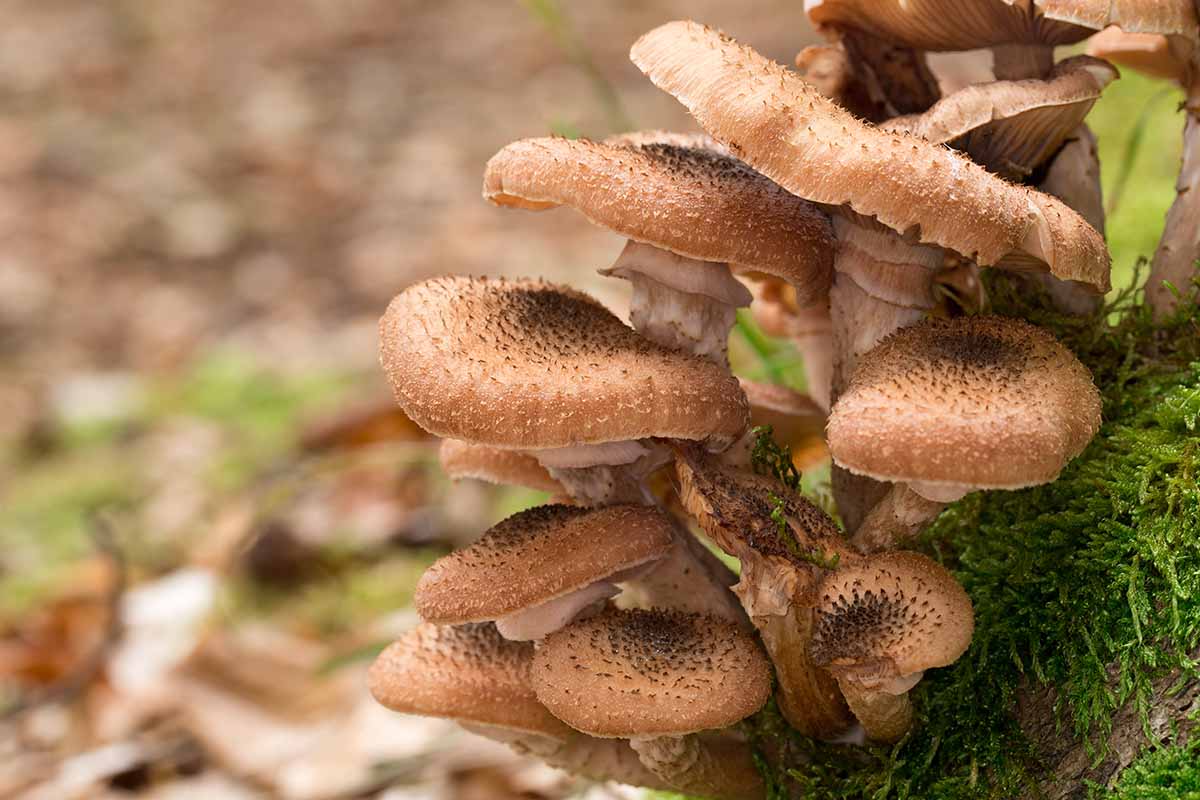

Armillaria mellea is discovered the world over in temperate areas.
The fungus wants a number to outlive, which means it might’t dwell within the soil alone, however even small sections of outdated roots or damaged wooden can act as hosts. The fungus can dwell on this sort of materials for many years.
Should you plant your pears in an space the place different species which might be vulnerable to an infection have been grown prior to now, it’s extremely doubtless that the pathogen is hanging on the market on lifeless roots within the floor.
The identical goes for those who’re constructing or planting the place a forest has been cleared prior to now ten years or so.
Identification
Armillaria rot generally is a tricksy illness. In some pears, the one seen symptom is that it merely seems to be a bit unhappy, missing vigor, and failing to thrive.
The pear could not produce as a lot fruit because it used to, and maybe it simply doesn’t look nice, with dropping or yellowing leaves.
Different occasions, the tree will wilt instantly and die fully inside just a few weeks.
It’s the identical fungus and the identical illness, however two extraordinarily totally different reactions.
Much more annoying is that these signs may very well be attributable to numerous totally different points. An excessive amount of or too little water may cause drooping and yellowing. Gopher feeding or Phytophthora rot might current with among the similar signs.
The easiest way to make sure that you’re coping with Armillaria is to seize a shovel and dig out among the dust on the base of the pear tree. Scrape off among the bark from the bottom of the trunk and among the bigger roots.
If current, you will note a cream or white cottony or felt-like layer, which is the mycelium or the root-like mass of the Armillaria fungus.
Peel off among the bark, and also you may see mycelial followers, that are white fan-like shapes made up of mycelial progress.
Should you poke the wooden together with your finger or a shovel, it will likely be spongy and delicate, and also you may even get a whiff of contemporary mushrooms.
Along with or as a substitute of the mycelium, you may also see mycelium wire or rhizomorphs. These black, string-like constructions additionally act as roots for the fungus.
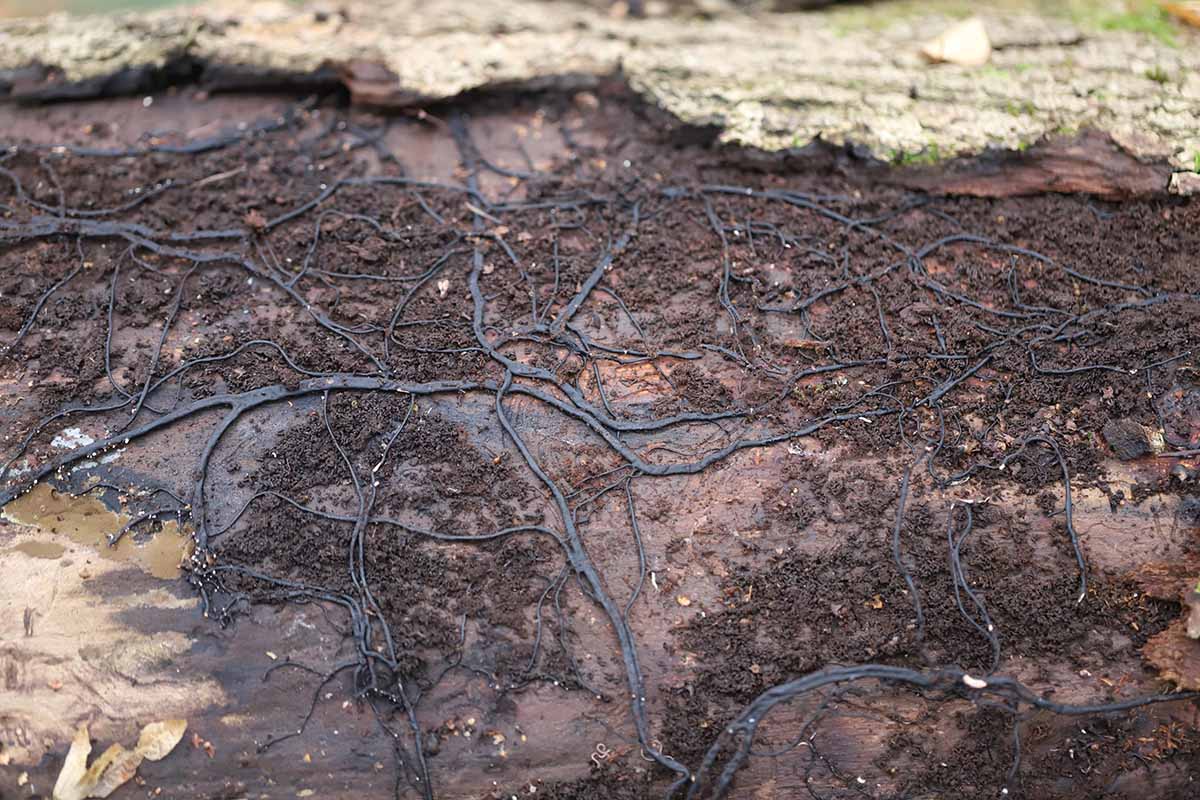

Lastly, within the fall or in the course of the wet season in the summertime, fall, or early winter, you possibly can typically see tan or honey-colored fruiting our bodies – mushrooms – on the base of the pear tree.
These are generally known as honey fungus, they usually develop on each lifeless and dwelling wooden.
Whilst you could be vulnerable to dropping your tree to this an infection, on the brilliant aspect, these mushrooms are edible.
Possibly swap your pear tarts for mushroom tarts? Simply be 1,000 % positive you’ve recognized them appropriately, and at all times cook dinner them totally earlier than consuming.
Biology and Life Cycle
Armillaria reproduces in dwelling wooden and within the roots of contaminated bushes.
It seems as mushrooms on the base of the tree within the late summer time or fall, every with a capped head and notched gills.
As they age, the caps flatten out and ship out spores, which land on host wooden and start to breed.
The fungus then overwinters within the wooden as mycelia or rhizomorphs.
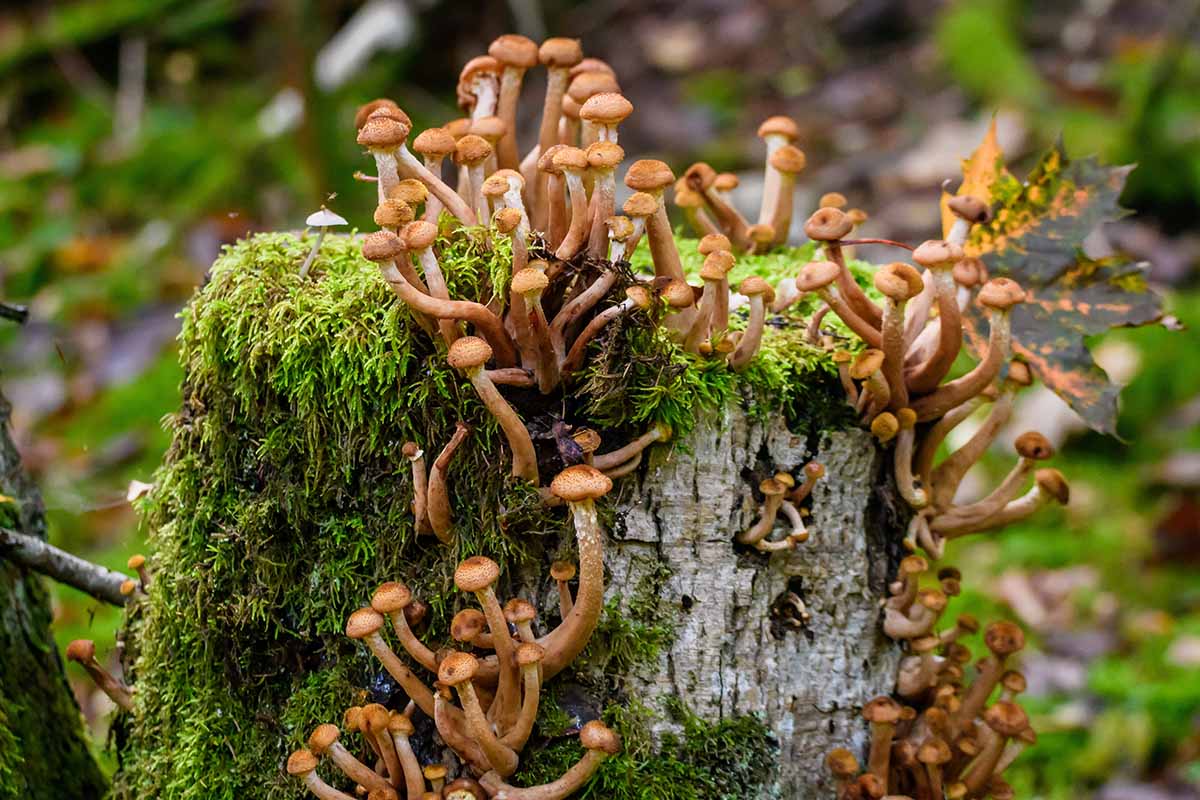

When connected to a tree, the string-like rhizomorphs can stretch as much as 10 toes within the floor to succeed in one other host.
The fungus finds a brand new specimen to contaminate by means of wounded areas after which strikes down into the roots and into the crown. Ultimately, the fungus will girdle the tree, destroying the cambium layer, and killing it.
The fungus also can unfold in water and on contaminated wooden.
Management Strategies
I don’t like having to be the bearer of dangerous information, however right here we’re: There aren’t any efficient strategies to regulate this illness.
Although consultants haven’t actually give you a foolproof strategy to take care of this illness but, there’s a last-ditch effort you possibly can attempt in case your pear bushes are contaminated.
One strategy to sluggish or cease the development of the illness is to rigorously dig a foot down throughout the diameter of your tree to show the decrease trunk and higher roots.
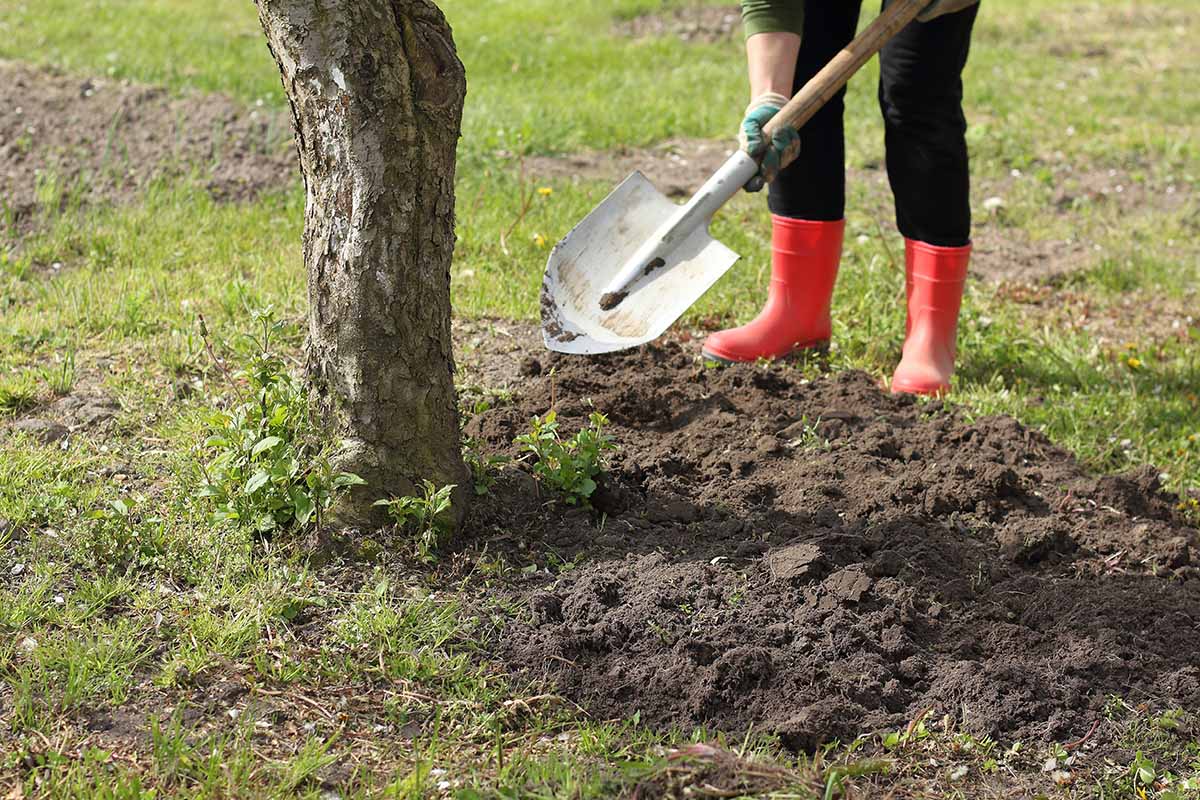

Stop all plant particles and soil from falling into the opening that you simply dug and keep away from letting any water into the ditch.
Should you preserve the realm clear and dry all through the spring, summer time, and fall, the illness ought to cease.
You’ll be able to bury the roots once more within the late fall.
The illness assaults every kind of woody bushes, however oak, black walnut, and willow are most vulnerable.
Should you’re critical about rising pears, keep away from planting them close to any of those.
Prevention
Let’s speak about prevention. Once you water your pear tree, water away from the trunk on the bottom out to the drip line.
You also needs to take excessive care to keep away from injuring your bushes. Younger specimens are particularly vulnerable, however older bushes might be killed quickly for those who harm them whereas pruning, mowing the garden, or edging.
You also needs to take away any mushrooms that you simply discover close to your bushes as a result of they will open and unfold their spores within the wind.
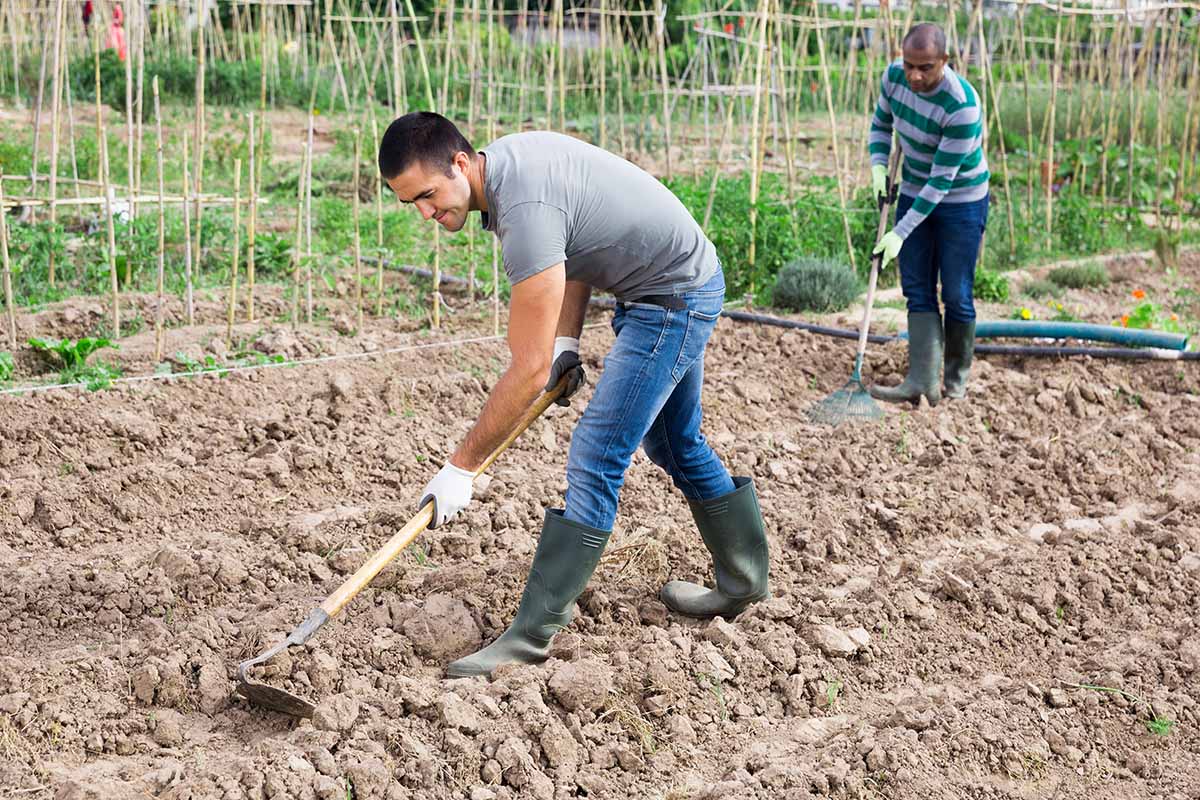

Should you’re planting in an space the place vulnerable bushes have previously been grown or the place forest has been cleared, ideally it’s best to dig down and take away any leftover roots.
Then, until and look forward to a few years for any dwell plant tissue to die off.
Some varieties of pears are extra immune to armillaria than others. Pyrus betulaefolia, P. calleryana, most French pear cultivars, hybrids grafted on ‘Bartlett’ rootstock, and hybrids on ‘Previous Dwelling’ x ‘Farmingdale’ rootstock are probably the most resistant.
If you wish to err on the aspect of warning, plant these.
Lastly, attempt to preserve your bushes in the very best well being you possibly can by feeding, watering, and pruning appropriately. You’ll be able to study extra about tips on how to domesticate pear bushes in our complete information.
Honey Fungus is Dangerous Information
Honey mushrooms sound scrumptious, and they’re, for those who’re a human with some butter and a scorching pan. However for a pear tree? Not so nice. With no remedy, this illness can spell full catastrophe.
Have you ever seen mushrooms on or close to your tree? Or possibly a few of these telltale yellow branches? Tell us what you’re experiencing and for those who want some additional recommendation within the feedback part beneath!
And for extra pear rising know-how, have a learn of those guides subsequent:
